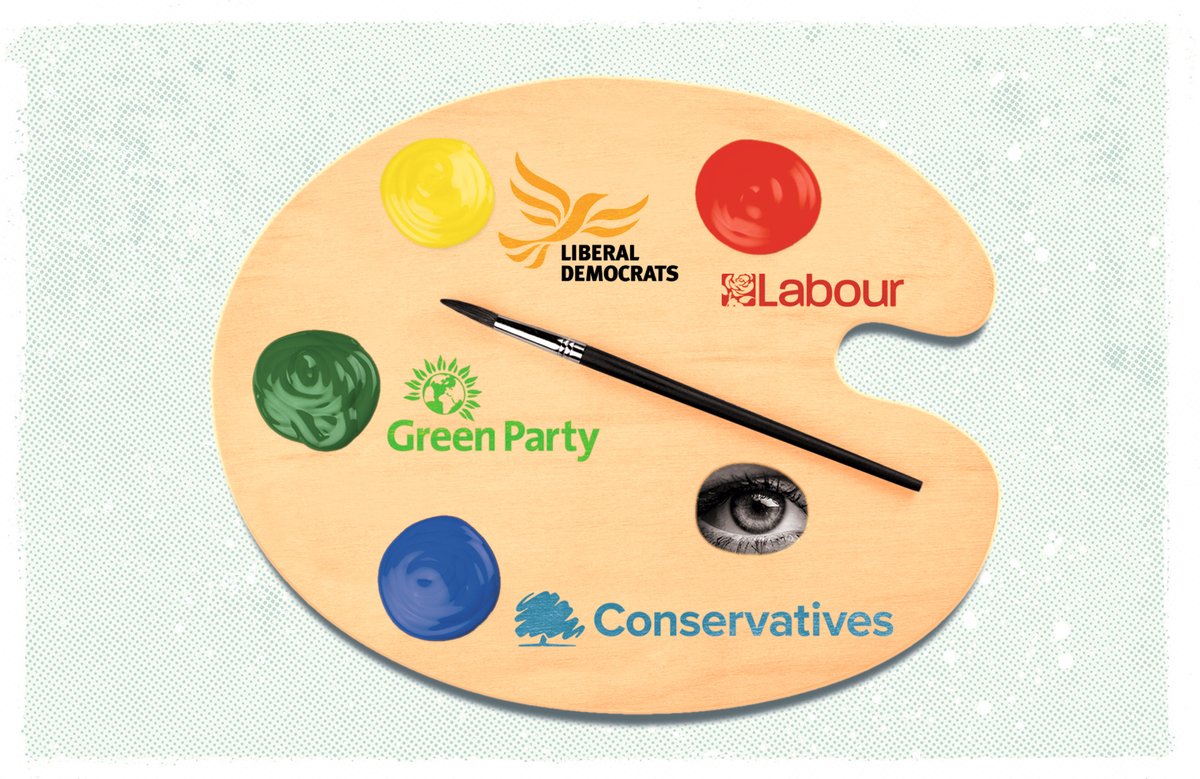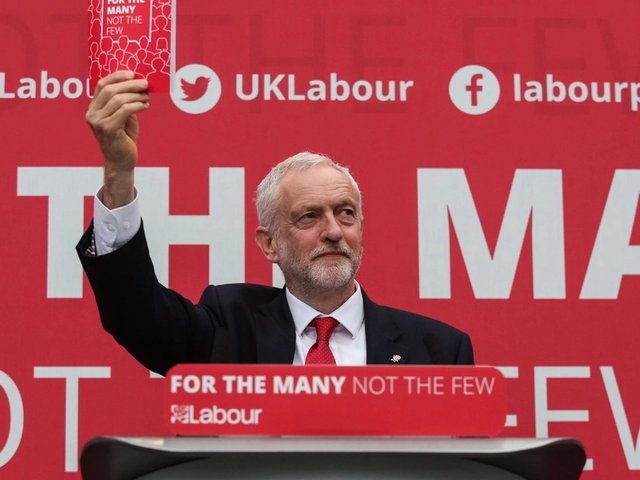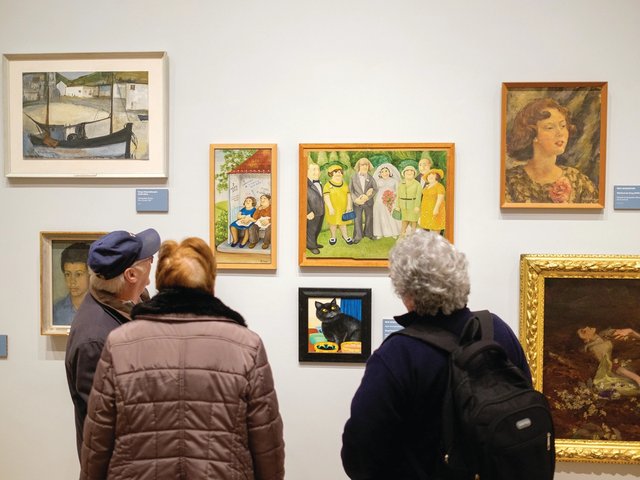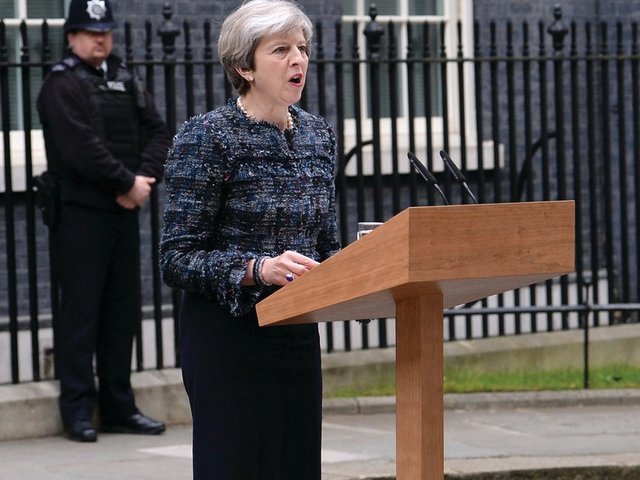The UK general election on 4 July has repeatedly been cast as a reckoning. Since the Conservative party came to power in 2010, the country has faced one crisis after another. It is what the 2023 Turner Prize winner Jesse Darling homed in on with hazard tape, broken columns of reinforced concrete and kettling-style pedestrian barriers. His winning installation, Alex Farquharson, director of Tate Britain, said, was a “state of the nation” address, an assessment of modern Britain.
The public spending cuts imposed in the wake of the 2008 financial crisis severely impacted the provision of social housing, social care, and have been linked with ballooning NHS waiting lists. Covid, Brexit and the cost-of-living and energy crises have compounded this tumult, leaving more and more councils unable to fully fund their statutory duties, let alone discretionary, culture spending.
When it comes to the art community, Mark Wallinger, another Turner Prize-winning artist, says, “the charge sheet for the Tories is lengthy”. He lists: “the loss of the arts as a central part of the school curriculum, the woeful underfunding of the arts (with art schools and museums struggling), the knock-on effects of Brexit, the continual sniping and threats to the BBC, the merry-go-round of different culture secretaries”.
In March 2024 Labour published its plan for the arts, a strategy for education, funding, placemaking and industry growth. This plan claims as its lineage the seminal 1965 white paper A Policy for the Arts, penned by the pioneering first minister for the arts, Jennie Lee, under Harold Wilson’s Labour government of 1964-70. It emphasises access to art for all and support for the freelancers who make it. And it is supported by the present Labour leader Keir Starmer’s insistence that his party will not oversee a return to austerity.
To understand what the situation is on the ground—the problems to which Labour’s arts manifesto is responding—The Art Newspaper interviewed 12 institutional leaders, art college deans, artists and scholars from across the UK. All concur that, periodic investment and good relationships with individual Conservative MPs notwithstanding, the impact of the past 14 years on arts funding and arts education has been, as the cultural policy expert Kate Oakley bluntly puts it, disastrous, when not “near existential”.
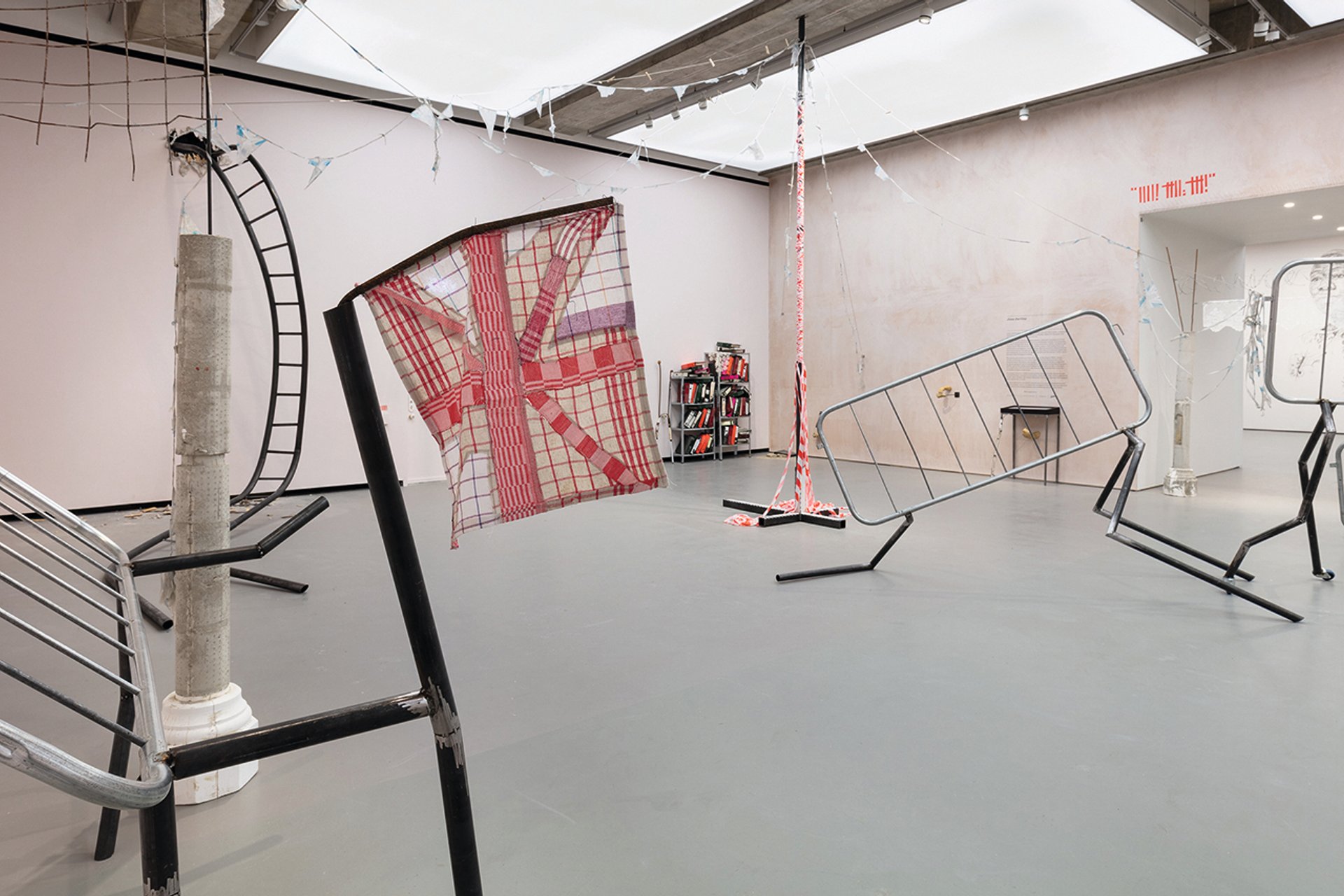
A metaphor for Britain’s broken cultural policy? Jesse Darling’s installations, of broken pedestrian barriers and a hazard-tape Union jack, won the Turner Prize in 2023 Photo: © Angus Mill Photography
First, the good news
Experts in the cultural industries are, by definition, creative and resourceful. Many of the interviewees highlight, therefore, distinct positives.
At a devolved nations level, these include Arts Council England’s ten-year Let’s Create strategy, which began in 2020; the Welsh government’s plan to establish a distributed national collection of contemporary art, involving ten different venues, thereby satisfying Amgueddfa Cymru-Museum Wales’s national mandate beyond its seven locations; and Scotland’s sustained efforts to keep university tuition free (for students living in Scotland and going to a Scottish institution).
Further, scholars and institutional directors alike laud Wales’s Well-being of Future Generations Act, which came into force in 2016. The dean of cultural engagement at the University of Leeds, Ben Walmsley, says that in mandating that culture be a consideration in every major political decision, this is a truly radical bit of legislation, while “in England, we’re stuck back in the past century, in lots of ways”.
On a UK level, people highlight the binding agreements, introduced in 2021, for the sales of national treasures to UK museums; and before that, the former prime minister David Cameron’s government successfully shepherding the 2012 Olympics and its attendant nationwide Cultural Olympiad. This resulted in 5,370 new works of art being commissioned and saw 43.4 million people turning up to take part. As the Art Fund director Jenny Waldman puts it, “It really gave a lot of oomph behind the ambition of arts organisations, large and small, right across the UK. And that is still felt today.”
Walmsley also points to the Culture Recovery Fund that Rishi Sunak, then Chancellor of the Exchequer, announced in 2020 in response to the Covid pandemic. “That £1.57bn came as a bit of a surprise,” he says. “And it came very quickly compared with other countries who protected their creative industries. That was a real sign of belief among the Conservatives in the cultural and creative industries, and they absolutely did save them from annihilation.” However, Equity, the performing arts and entertainment trade union, underscores that pandemic support “went to buildings and bosses” but not to the freelancers who keep the sector in business.
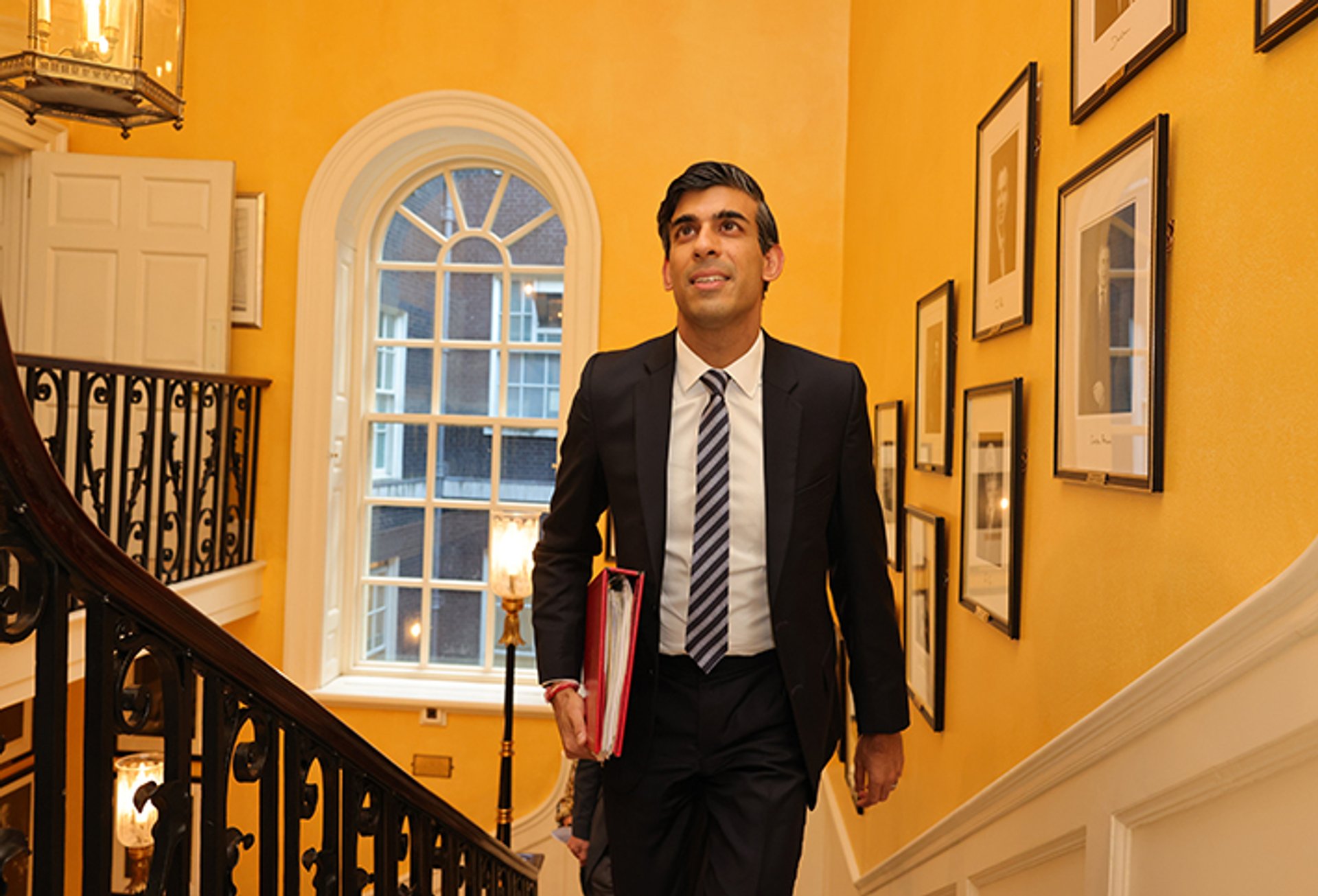
Rishi Sunak announced the Culture Recovery Fund in 2020 © Andrew Parsons / No 10 Downing Street
For many in England, the Arts Council is as beneficial as it is in need of an overhaul—particularly in how it measures outcomes, which dictates where money goes. Between 2010 and 2023, funding from Arts Council England for museums and galleries decreased by 36.7% in real terms. Recent research by Equity shows that, since 2017, UK arts funding more broadly—from Arts Council England, Arts Council of Northern Ireland, Arts Council Wales and Creative Scotland—has been cut by 16% in real terms.
Even where Arts Council funding has not been cut, the effect, due to the rising cost of living and inflation, is still a loss of 20%-30%. The Fruitmarket arts centre in Edinburgh receives 30% of its funding from Creative Scotland—but at a flat rate since 2008. “The same actual pounds!” its director Fiona Bradley says. “We’re the creative industries—we’re good at raising money in creative ways. But I think we’re at the limit of our ingenuity and our agility.”
This income loss is compounded by nationwide cuts to local government funding. In response to the 2024 Spring Budget, the Local Government Association said that local authority core spending power in 2024/25 “has been cut by 23.3% in real terms compared with 2010/11”. As Robert Leckie, the curator and director of London-based Gasworks, says, how this has extended to arts funding is straightforward: it is one of the very first things that gets cut.
This happened from day one of austerity when Somerset County Council voted to cut 100% of its direct funding to arts organisations in 2010. At the time, the Labour MP Ivan Lewis deplored the shortsightedness of defunding a sector which employed more than 8,000 people and brought in over £345m per year. “This economic argument would stand,” he wrote, “even if the arts development budget wasn’t reported to be £159,000—0.0004% of the council’s overall expenditure.” And yet, Newcastle council soon followed suit with a 50% cut and the formerly uncommon and now commonplace slew of subsequent council Section 114 notices (effective bankruptcies, see right)—12 since 2018—have seen culture spend similarly slashed in Birmingham, Suffolk and Woking councils, to similar levels of baffled consternation.
“Culture is comparatively very, very cheap,” Bradley says, “but it has massive returns.” Cutting cultural spending does not usually fix the bigger deficits it is intended to. It does, however, leave gaping holes in a region’s cultural fabric, she says.
The director of the Cardiff-based organisation Artes Mundi, Nigel Prince, highlights how devolution has further compounded funding cuts. Faced with a £30.3m budget hole, Cardiff city council voted in April 2024 to cut all culture spend. This came on top of the Welsh government announcing, that same month, a 10.5% reduction to Arts Council Wales’s funding, which was then passed on to the organisations it supports.
Prince says this speaks to the inequity between arts organisations from nation to nation, not least because Arts Council Wales is funded by central government at a lower per-capita rate than its English counterpart.
This matters in an election year when UK campaigns ostensibly cater to the whole country, while many of the proposals, in fact, affect only England. It matters even more when Artes Mundi is facing cuts to its Arts Council Wales funding, losing its Cardiff council grant altogether and applying to ever-more competitive alternative sources for the remaining 70% of its income.
Prince describes the process of having kept Artes Mundi afloat since he arrived in 2019 as “finding creative ways to make one plus one equal three”. This sentiment is echoed in the Art Fund’s 2024 survey of 324 museum directors from across the UK, two thirds of whom say they need 10%-20% more funding just to stabilise.
Lack of policy focus
In its 2024 manifesto, the national non-profit organisation Creative UK highlights that for the government to meet its own target of one million creative industry jobs by 2030, the UK needs “a culture-rich education—complete with skills-focused careers guidance” to be made available to all young people. “It’s the only way to ensure a diverse, skilled talent pool for the future.”
And yet most of the people The Art Newspaper interviewed voice alarm at the lack of vision for the arts—and the lack of value afforded them—at governmental level.
Walmsley says the sheer churn at the ministerial level has not helped. With 12 culture secretaries in 14 years, the Department for Culture, Media and Sport (DCMS) beats most other departments in terms of turnover. The Institute for Government says the role is often considered “an enjoyable stop-off en route to more important roles”. But for scholars and museum heads alike, this denotes a concerning lack of focus and stewardship. Instead of governing, the Conservatives have, to Oakley’s mind, let arts and culture policy drift. “I couldn’t really say what the Tories’ cultural policy has been,” she says. “It’s neglect, sometimes combined with hostility.”

Oliver Dowden, pictured here at Tate Modern, was culture secretary in 2021 © Simon Dawson / No 10 Downing Street
She points to the populist shift that has taken place, at least in the past five years, which is perhaps clearest in what has happened to arts education. Since 2010 entries to arts subjects at secondary school level (GCSEs) have reportedly almost halved and school provision has followed suit, with 42% no longer offering music as a subject. Arts A-levels (school-leaving qualifications) numbers are also falling. Contemporary Arts Visual Network England, in its Creative Education manifesto, notes a decline in the number of people training to be art and design teachers. It also says that up to two thirds of those already in place are considering leaving the profession.
Overall, Conservative rhetoric has emphasised the importance of science, technology, engineering and maths (STEM) but not STEAM: not, as scholars point out, the equal importance of the arts—and the humanities more broadly.
This ideological position is evident in both derisory comments from some government ministers about “Mickey Mouse degrees” and the real-world consequences of courses in literature and departments for music being shut down. The pre-eminent London arts university Goldsmiths is facing cuts so severe that staff in creative writing, theatre, visual cultures and more are being threatened with mass redundancies.
Mandy Jandrell, the dean of Creative Arts & Communication at Falmouth University, points out that while Labour first introduced university fees, it is the Conservatives who have really embedded the marketisation of higher education. This, she says, has come with some benefits. Students, as customers, are more protected and their economic futures are in some ways better catered to, with greater emphasis placed on developing employability skills.
At the same time, Jandrell says the metrics that the Office for Students uses to assess courses graduates’ progression are too narrow and too blunt. What an art school graduate is earning 18 months after their degree will differ massively from what a business school graduate might be on. “Are we valuing the fact that those graduates might well be assisting other artists, or working in a studio, or indeed working several jobs, as I certainly did for the first ten years of my art career, juggling lots of different kinds of jobs and actually gaining an awful lot of really good skills in the meantime?” Jandrell says. Skills, in terms of critical thinking, mental agility and creative problem solving, that are crucial, she says, for contending with the challenges society faces, from Artifical Intelligence to climate change.
For Fiona Bradley, this is where the biggest loss of the past 14 years is felt. “A successful cultural scene makes a successful country,” she says. “Yet that is a message that has completely stopped making any difference.”
When Keir Starmer launched the Labour manifesto on 13 June, he did so with the confidence of a man who knows he is headed for office. Pollsters have had him winning in a landslide since the election was called.
Lois Stonock, who heads the grassroots arts organisation Metroland Cultures in Brent, north London, cautions, however, that unless whichever incoming government really commits to reinvesting in the arts, “part of me just thinks that nothing’s going to change”.
Case study: a funding crisis at the Lightbox in Woking
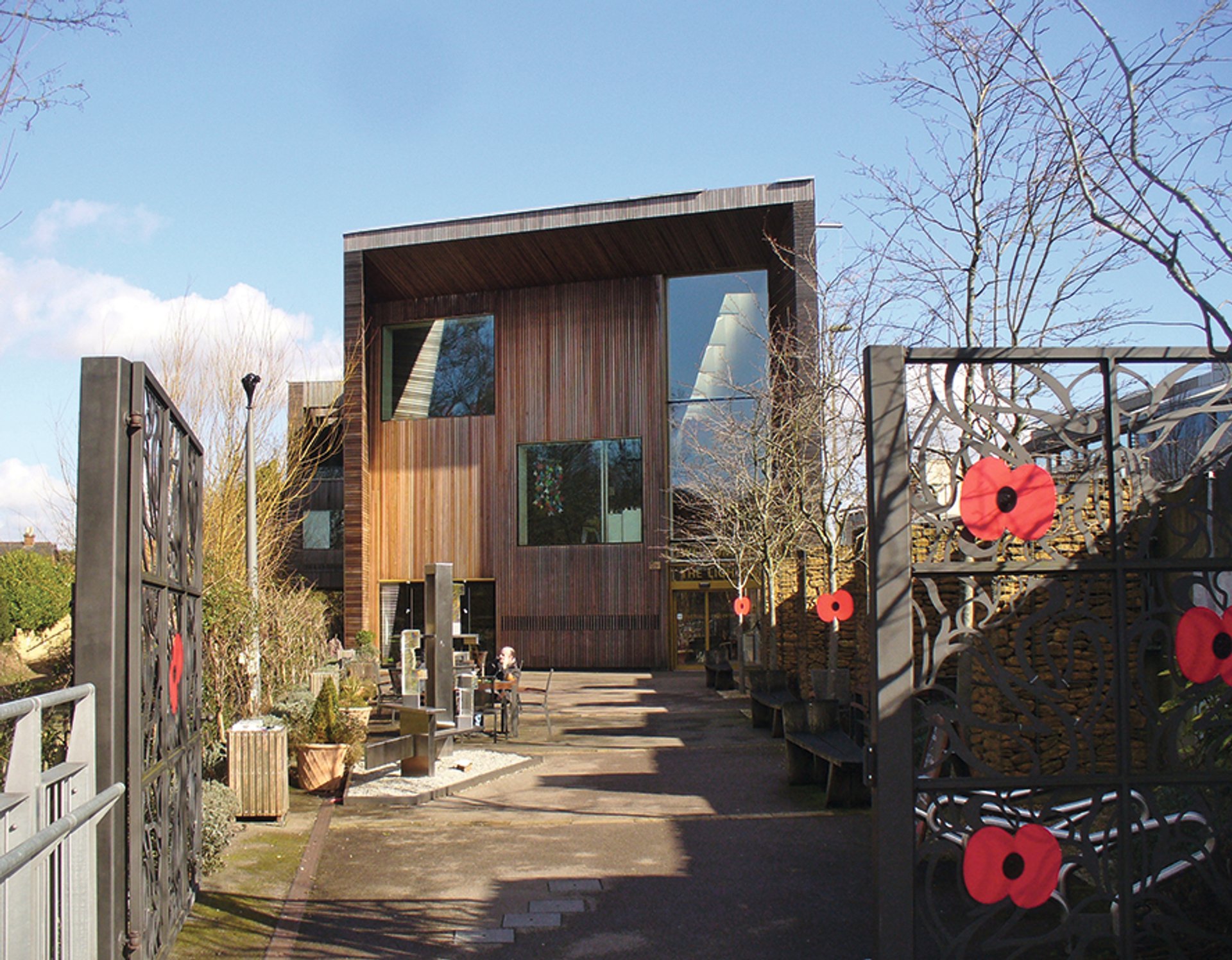
The Lightbox is having to find new funding streams following the axing of its annual grant from Woking council © Colin Smith
In a small art gallery in Woking, Surrey, the consequences of a national crisis are being felt: ticket prices are being raised, free exhibits canned and staff structures “rationalised”. The Lightbox, a Woking staple, has lost around a third of its annual funding after the town’s local council, which provided a yearly grant to the gallery, declared effective bankruptcy in the face of more than £2bn in debt
When Woking Borough Council declared effective bankruptcy in June 2023 by issuing what is known as a Section 114 notice, it was the most indebted authority relative to its size in the country. The council racked up an eye-watering £2bn in debt by doing what a lot of other councils have done in response to the government’s programme of austerity, first introduced in 2010: it used cheap government loans to invest in commercial projects.
But in Woking, the council “did it in style”, the local authority’s now deputy leader, Will Forster, says. Describing the financial predicament, the Liberal Democrat councillor says: “the government years ago cut funding to councils, including Woking. But it said: ‘Don’t cut services that much and don’t increase charges for your council tax that much—go and find alternative sources of income, and here is the Public Works Loans Board to fund those investments to bring in alternative sources of income.’ Woking did that, and they did it in style—they did it way over the top.”
After Woking declared effective bankruptcy, it embarked on a massive cost-cutting exercise. For the Lightbox, this meant the loss of its annual grant, which was once around £280,000. To soften the blow, the council reallocated funds to hand the gallery a one-off grant of £130,000 for this financial year to help it develop a new operating model.
But the loss in annual support has left a significant funding gap, according to the museum’s director, Sarah Brown. “Previously, the Lightbox was funded by around 40% from Woking Council,” Brown says. “When I joined the organisation, by far the largest proportion of funding came from the council, and then considerably less from trusts and foundations and the Arts Council, and obviously trading also.” She adds: “The funding structure should ideally be a 30-30-30 split, but with the withdrawal of the council’s funding, we now have to review the model that was in place previously.”
For Forster, the nature of the new model is clear. He thinks the Lightbox should focus on increasing its commercial income. “They’ve got to be quite entrepreneurial, they’ve got to appeal to businesses, and they’ve got to raise more donations rather than be dependent on public sector money,” he says.
Brown seems to agree. Within weeks of the 2024-25 financial year beginning, the Lightbox had implemented several new commercial approaches, including creating new commercially focused roles, the most senior being a head of commercial to oversee and boost the gallery’s income from events, venue hire, as well as the café and shop. Despite the new positions, the number of people working at the Lightbox continues to shrink. The gallery has managed to avoid cutting jobs, but the staff structure has been “rationalised” a number of times as and when people have departed, Brown says.
Difficult decisions have also been taken in relation to ticket prices. The gallery now charges for all of its exhibitions, including an exhibit on the town’s history, which used to be free. The cost of its day pass has also risen from £9.50 to £12.50 since 2023, a 31% increase. Under-18s can still visit for free, and the gallery has kept its “pay as you wish” policy on Wednesday mornings. “So there is an offer that isn’t charging, but we’re faced with a very tough decision. We have to address a deficit, and this is just one strand, one way of addressing that,” Brown says.
With a potential change in government around the corner, local government finance could be set to inch towards improvement. In its manifesto, the Labour Party promised “no return to austerity”, a fiscal policy that forced councils like Woking to engage in risky investment strategies. The party has also committed to reforming how councils are funded, ending “wasteful” competitive bidding, and overhauling the local audit system.
However, with a third of all councils across England already planning to cut their arts funding, according to data from the Local Government Information Unit, a change in government will not be enough to save some galleries from funding cuts.
“We’re all very aware that public funding has been frozen over the past decade—frozen at best, and cut,” Brown says. “I think everyone in the sector is thinking: ‘What does the new model look like, and how can we sustain a vibrant cultural economy?’”
Adam Carey


